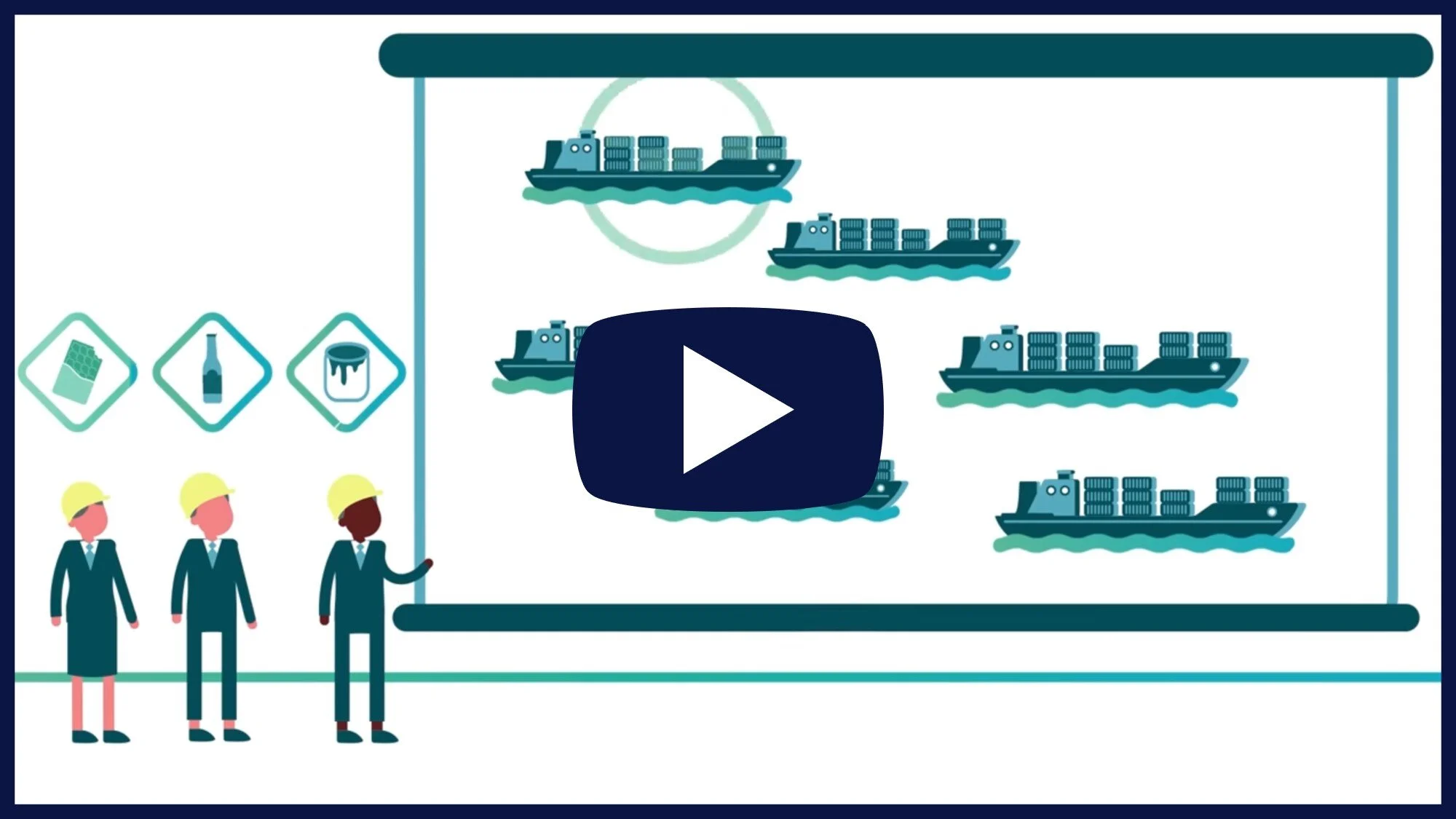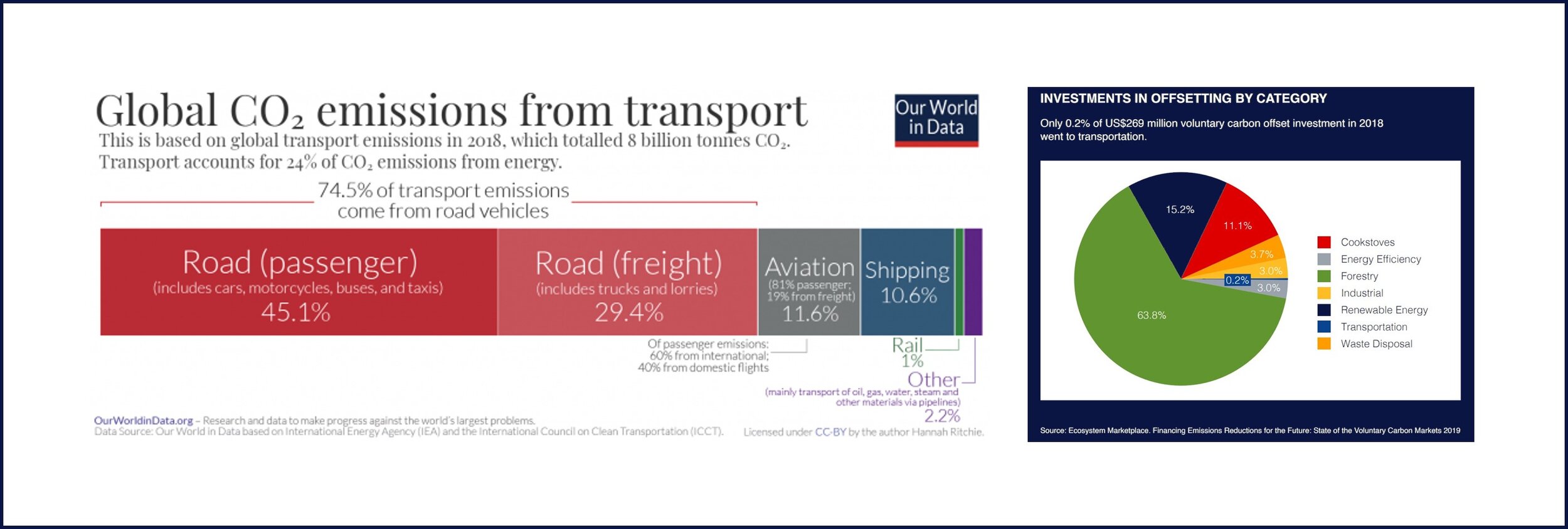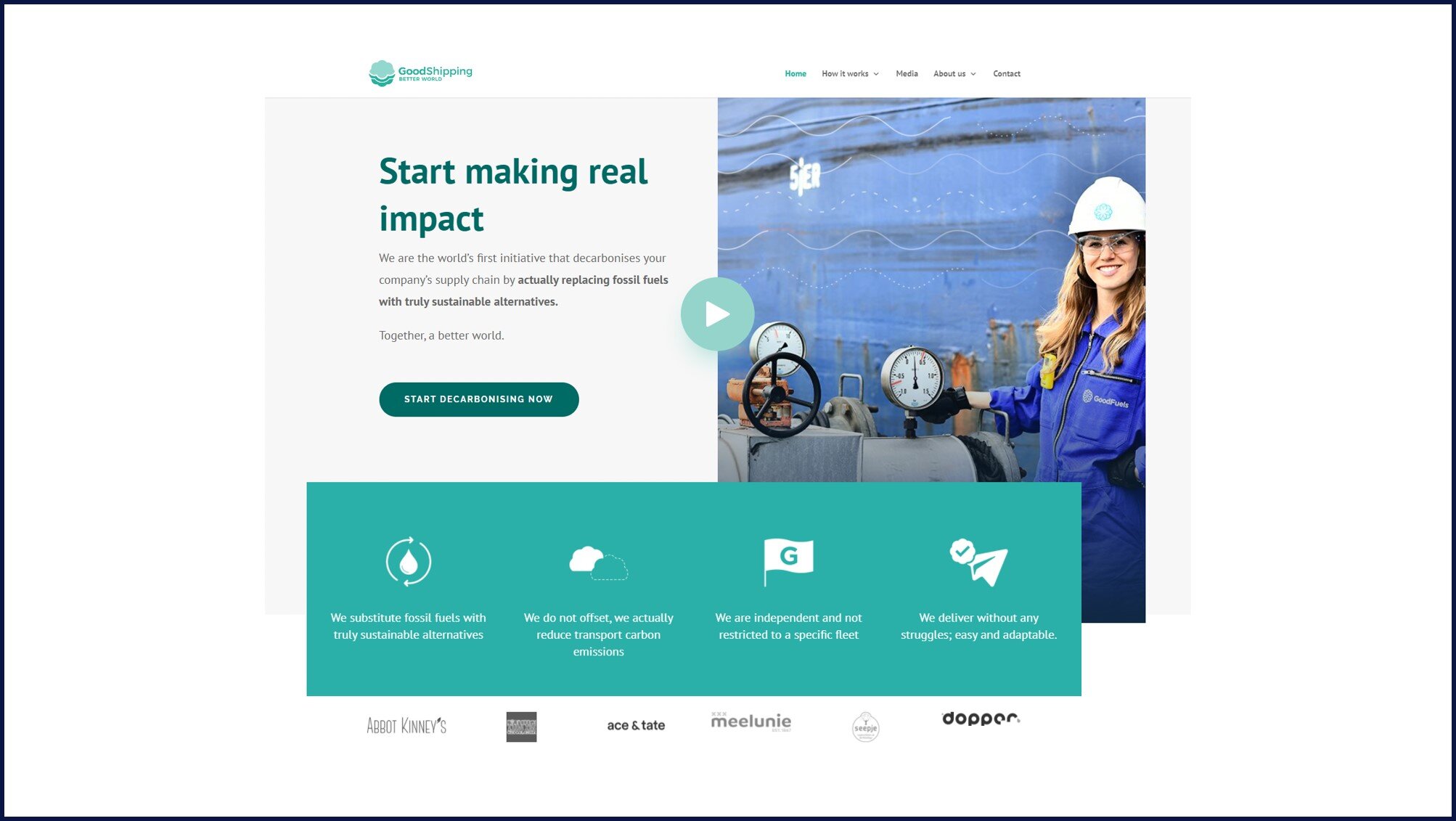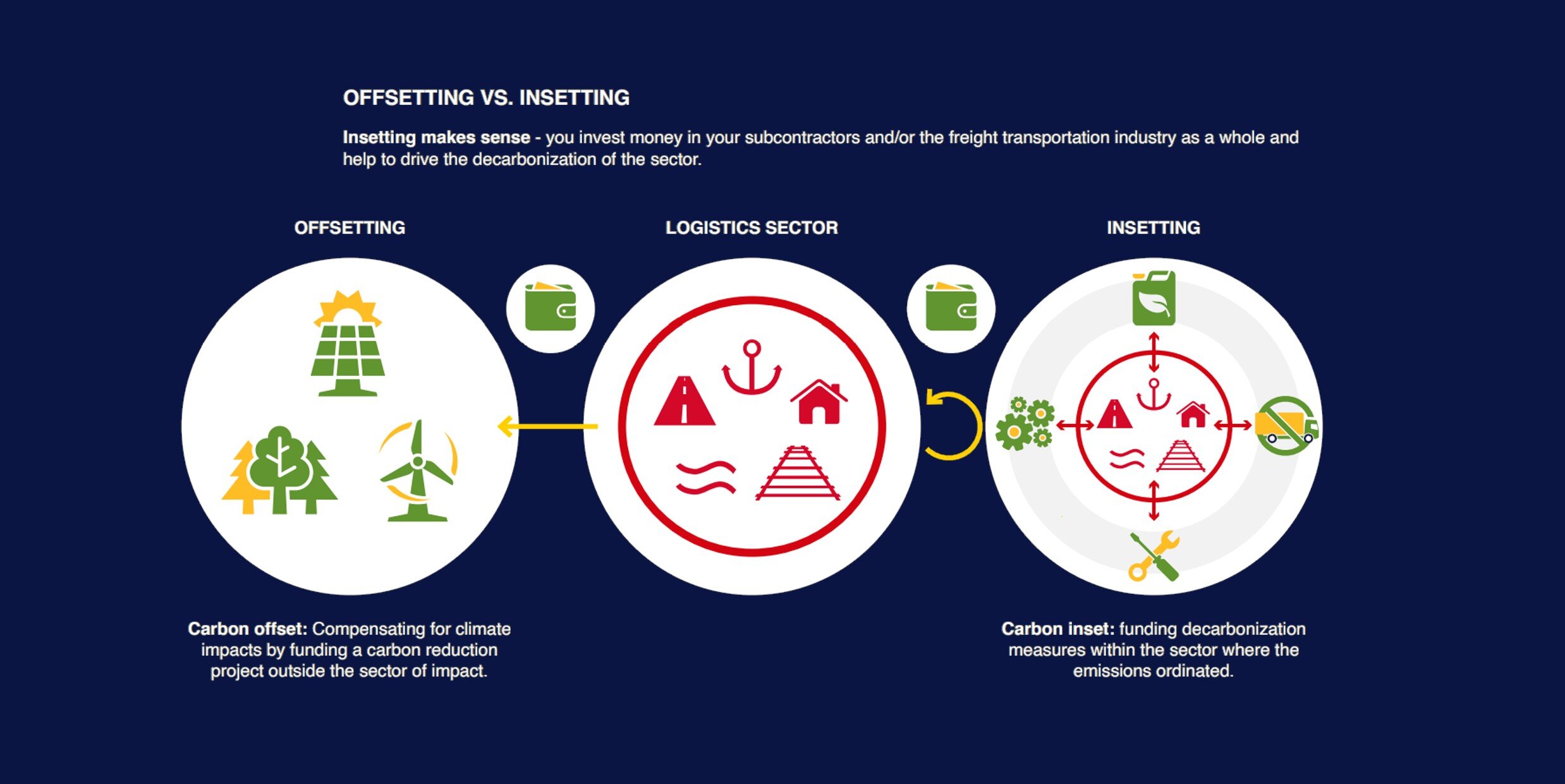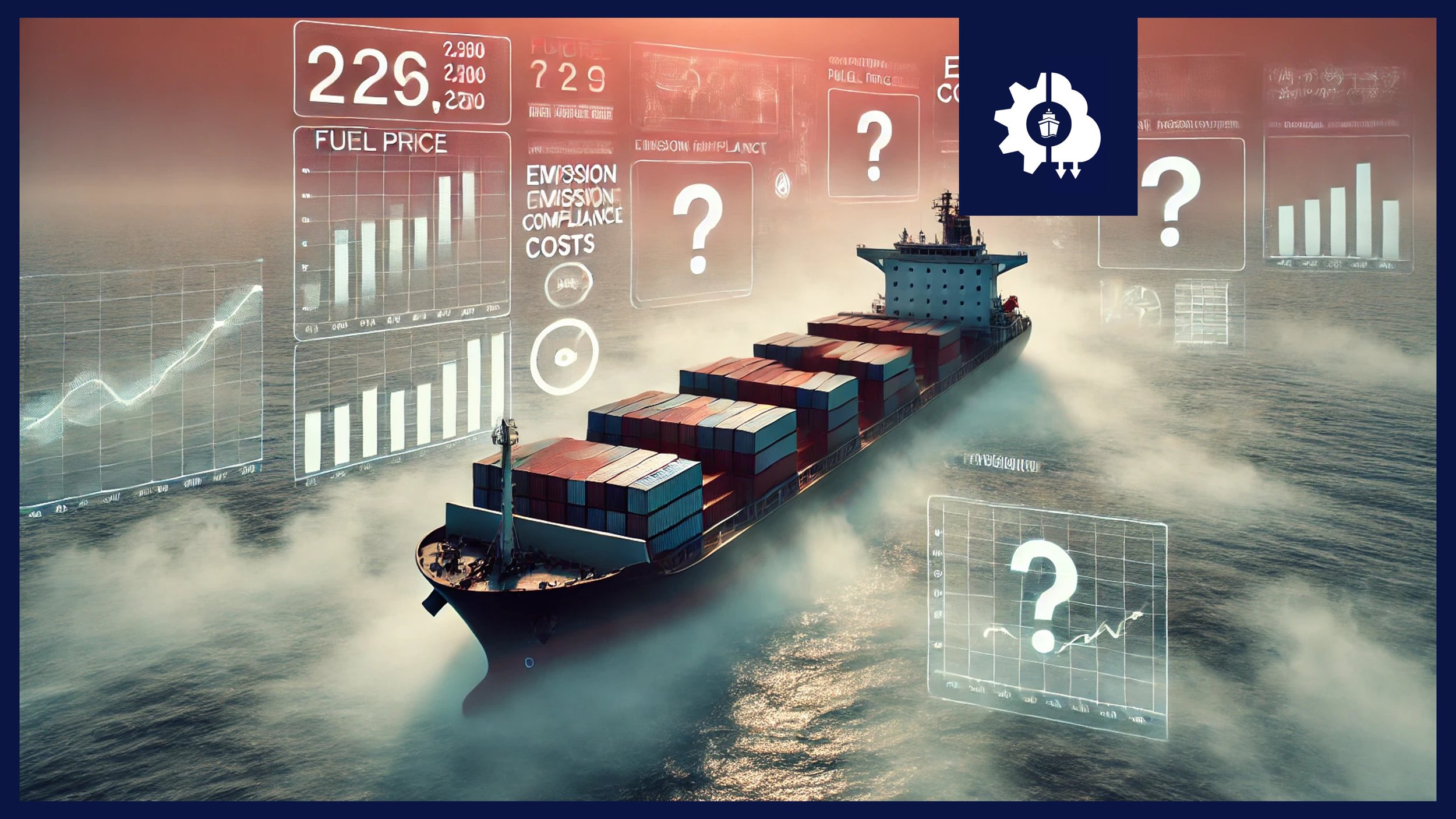What is carbon insetting?
Carbon insetting is offsetting carbon inside the shipping sector, transferring emission savings from one vessel to another
Summary - Reducing carbon emissions in the shipping sector can be hard and expensive. Carbon insetting is a way to compensate for emissions that you are unable to mitigate within your normal operations - or are too costly to mitigate - but can be mitigated at other places in your fleet or the sector. Carbon insetting is simple, scalable and perhaps most importantly: almost all vessels can do it without the need for retrofitting or upfront investment costs. There is no compensation in trees, renewable energy or cookstoves. The carbon savings stay inside the shipping sector and the money used to finance the savings translate directly in the upscaling of carbon-reduction technologies. If you are a ship or cargo-owner and you are interested to reduce your emissions, contact GoodShipping to participate in their program.
Carbon insetting in the shipping industry is done by GoodShipping. Are you a shipowner? This could help you and your clients decarbonize, very cost effectively!
This is not a story about carbon offsetting
Nor is this a story about planting trees or cookstoves. This is a story about carbon insetting. A true and tested method to achieve significant, tangible and realistic carbon emissions reductions throughout the transport sector supply chain.
This blog will try and illustrate the problem that the shipping industry and logistics sector as a whole is facing, as well as how carbon insetting can contribute to solving this issue. It is illustrated by GoodShipping, a prime example of how carbon insetting works in the shipping industry. It ends with some of the challenges for carbon insetting that need to be faced head on.
What is the problem?
> Carbon emissions in the shipping sector
How can we achieve global climate goals while carrying billions of tons of cargo each year on equipment powered largely by fossil fuels?
According to the Smart Freight Center, freight transportation is currently responsible for 8% of global carbon emissions (11% if emissions from logistics sites are included). Shipping itself accounts for almost 3% globally. Recent studies by the International Transport Forum forecast these emissions to double by 2050 as demand is anticipated to grow threefold in this period. Climate action by companies is largely voluntary and lacks coordination. In short, the pace of freight decarbonization is too slow.
Some freight operators mitigate part of their transportation emissions by investing in carbon offsets, such as in forestry projects. In 2018, only 0.2% of the $268 million voluntary carbon offset market went into transport-related projects. Most of the funds are spent outside the transport sector, for example on forestry, renewable energy and cookstoves. These are certainly meaningful and also have a social impact, but they do not reduce greenhouse gas emissions from the transport sector itself, nor its related co-pollutants, like black carbon, ozone, and nitrogen oxides. To some, this feels wrong.
Spending money on non-related offsetting projects creates a repetitive cash-out without any correlation to the business. Offsetting outside the shipping sector will not support the technological shift required to advance carbon neutral shipping solutions.
What can we do about this? Sustainable marine (bio)fuels are not available in all regions and above all, expensive. Is there perhaps another way to reduce emissions in the maritime transport sector? How about carbon insetting?

Carbon insetting can reduce emissions
> What is carbon insetting?
Carbon insetting is the practice of offsetting carbon emissions inside your own supply chain or sector. It is a way to compensate for emissions that you are unable to mitigate within your normal operations - or are too costly to mitigate - but can be mitigated in other places in the sector.
This is illustrated by the use of a mass-balance approach for biofuels. In such a case, biofuels are used in a vessel A but the savings contributed to vessel B. This could be done because biofuels are cheaper in the region of vessel A, or because vessel B is not ready yet for biofuels. It is based on the premises that ‘CO2 does not have a passport’, and that it does not matter whether the sustainable marine fuel is burned in vessel A or vessel B.
Let us illustrate this abstract process by means of a clear example: GoodShipping.

> How does it work? An example with sustainable fuel by GoodShipping
GoodShipping substitutes fossil fuels with truly sustainable alternatives, recognized by the ISCC. They do not offset emissions - like forestry - but actually reduce carbon emissions in the transport sector. Customers participating in the program pay a fixed surcharge for every shipped parcel, which is then fully invested into biofuels. They work with a dedicated but independent fleet of vessels that are suitable for the use of certified sustainable fuels. In practice, it works as follows.
When a client like Ikea decides to reduce 100 metric tons of carbon emissions in their supply chain - because they want to ship carbon neutral Pax closets - they purchase about 30 metric tons of sustainable fuel. This amount of fuel will ensure the carbon emissions are mitigated. The fuel is then bunkered in one of the dedicated vessels that are part of the GoodShipping program, thereby reducing emissions in the supply chain. It does not have to be the exact same ship that transport the Pax closets for Ikea. We assume here that ‘CO2 does not have a passport’, therefore it is not important in which ship or engine the fuel is consumed. Ikea can claim their emissions reduction for the transport, the savings remain in the supply chain and everyone is happy.
Sustainable marine fuels are but one example. It goes without saying that the scaling of alternative measures to reduce emissions, such as fleet renewal, engine retrofits or improved efficiency in the supply chain all provide meaningful reductions in climate impact. In addition they benefit public health and safety, thereby contributing to achieving the Paris Agreement and supporting the Sustainable Development Goals.
Click here to watch the GoodShipping explanation video.

How can carbon insetting help you as a shipowner?
> What are the benefits?
Carbon insetting is simple and scalable. The beauty of carbon insetting is that everyone - including you - can participate today, regardless of freight volume, location, trade routes and existing cargo contracts. Almost all vessels can participate without the need for retrofitting or upfront investment costs, while many other technologies like hydrogen may take years or even decades to perfect.
In addition, carbon insetting is a way to bypass geographical limitations and costs. Do you have a client in the U.S. building windfarms, that wishes to reduce carbon emissions? Are sustainable marine fuels too expensive on the East Coast? No worries. Purchase biofuel for another vessel in Rotterdam, either using the GoodShipping program or by yourself, and contribute these emission reductions to the U.S. project. Emissions saved, cost reduced, client happy.
As an icing on the cake, carbon insets would not only contribute to achieving the UNSDGs, Paris Agreement targets or corporate climate goals, but would also result in structural improvements to logistics assets and infrastructure. There is no compensation in trees, renewable energy or cookstoves. The carbon savings stay inside the shipping sector and the money used to finance the savings translate directly in the upscaling of carbon-reduction technologies.
By now you are probably foaming with enthusiasm and ready to go! So how do you participate in this exactly?
> How can you participate?
Check out the GoodShipping website for 2 minutes. Take a look to determine if you like what you see. That’s it.
In case you do like what you see, you can contact GoodShipping directly and they can help you on your journey. They can help you as a shipowner and make you a part of their fleet, or they can help you as a cargo-owner to make transporting your goods carbon neutral. For both shipowners and cargo-owners, GoodShipping is the place to start when it comes to carbon insetting.

What is needed for carbon insetting to scale?
> Proper accounting and standards
The first step is to develop standardized methods and guidelines for carbon inset accounting and reporting, based on the the rule of thumb that a ton of avoided carbon can only be registered, purchased, and retired one time.
Double counting is viewed as a risk to the credibility of carbon offsets, which is why the carbon offset marketplace is backed up with a robust set of verification and certification schemes. Carbon offset projects must ensure that leakage does not occur – meaning that increases in carbon emissions outside the offset project’s boundaries must be tracked and avoided.
For the case of GoodShipping, the calculation of carbon emissions is done based on the recommendations in the GLEC Framework, using emissions data from the Clean Cargo initiative and the EcoTransIT World Initiative calculation tool. GoodShipping’s environmental benefits are quantified and protected from double claims, and the CO2 benefits are allocated to the customer. The whole process is audited at least once a year by an external auditor (Ernst & Young in 2020), after which the customer receives an official certificate for the amount of biofuels purchased as well as the corresponding emissions reductions compared with bunker fuel. This should take into consideration accounting issues such as additionality, double counting, leakage and co-benefits.
The next step in order for these accounting methods and standards to work, is acceptance of carbon inset investments as a viable means for scope 3 emissions reduction. For that, we can copy and paste existing methods from the electricity market.
> Acceptance of ‘Renewable Energy Credits’
Carbon insets can build on the existing experience with Renewable Energy Credits – certificates for energy generated by renewable energy sources. How does this work?
Energy producers register or “book” the amount of renewable electricity they have generated, and customers purchase or “claim” the green electricity. The credit is then “issued” as a proof of purchase, eliminating double counting. Customers may not receive the resulting green electricity themselves but accept that any investment collectively drives our shared energy infrastructure towards carbon neutrality.
Like electricity, shipping is a “sharing economy,” in which freight buyers (shippers and logistics service providers) contract with carriers across the globe to perform the actual movement of goods, as well as the logistics sites that store and transfer cargo. A freight-focused carbon inset could operate with a similar mechanism to Renewable Energy Credits, allowing companies to use their carbon offset dollars to invest inside the freight sector. With a carbon insetting approach, companies can invest in projects anywhere in the sector, whether they ship their goods using vessels, trucks, trains or by foot.
Currently many organizations like Climate Disclosure Program (CDP), World Resources Institute, and the Science-Based Targets initiative recognize Renewable Energy Credits as a means for reducing scope 2 emissions, but do not allow carbon offsets (or insets) to be used as a means for reducing scope 3 emissions. While this certainly makes sense in some cases – a tree planting does not always equal an actual reduction in a company’s impact – it should be seen differently for carbon insetting in shipping.
If accounting methods are acknowledged and an accepted protocol for carbon insetting is established, following the Renewable Energy Credits example, what else do we need to scale carbon insetting initiatives?
> You and me, working together
Proper accounting and acknowledgement of standards by the industry is one thing. Actually doing it is another.
In order for you - the ship or cargo owner - to actually make a difference, a suite of diverse and meaningful decarbonization projects in a marketplace is required. The GoodShipping program is a great place to start for shipping, but it needs to become part of a greater whole of initiatives. What is required is a marketplace with projects dedicated to reduce emissions throughout the entire logistics supply chain. A marketplace for insetting solutions in the shipping and logistics sector. At this moment, such a marketplace has to be developed.
I confess, the lack of such a marketplace raises many questions. It is a “chicken-and-egg problem”, as the success of this marketplace is dependent on carbon inset projects being acknowledged by carbon accounting standards and climate target-setting initiatives.
Perhaps it is easier to break this enourmous challenge down into smaller tasks. Start with what is easy, and what we already have. Join the discussion on our community, and let us know what you think of carbon insetting by clicking here.
This was the story about carbon insetting
But is it the right thing to do?
Some argue that carbon insetting ‘still does not feel right’. It is a commonly heard narrative that is similar to carbon offsetting: why compensate somewhere else if we can use the money here and now? Due to the lack of a mature marketplace and uncertainties about the accounting methods, many still wonder if carbon insets reduce emissions. Many wonder if it truly counts to achieving our climate goals. If that is the case for you, and you are wondering whether carbon insetting is the right thing to do, ask yourself the following question.
Is doing something better than doing nothing?
Our answer is YES, in capital letters.
We believe participating in carbon insetting is better than doing nothing. Even with the lack of an international accounting standard, we believe it is still the right thing to do. Carbon insetting is simple and scalable, suitable for almost all vessels without the need for retrofitting or upfront investment costs. There is no compensation in trees, renewable energy or cookstoves. The carbon savings and the money stay inside the shipping sector and the money and translate directly in the upscaling of carbon-reduction technologies.
As always, true change comes from within and is guided by only a single narrative: you deciding whether this is the right thing to do.
References & More Stories
Haus von Eden - Carbon Offsetting vs. Carbon Insetting: Welcher Ansatz eignet sich zur Emissionsreduktion
Smart Freight Centre - Carbon Insets for the Logistics Sector
MIT - Sustainable Supply Chains
GoodShipping - Decarbonize your company’s supply chain
Ellen McArthur Foundation - Enabling a circular economy for chemicals with the mass balance approach

